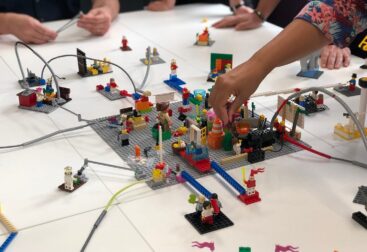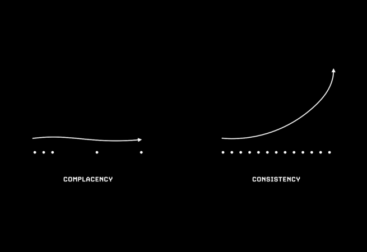As someone who has used a wide range of smartphones over the years, I was excited to see what the Pixel 7 Pro had to offer. From its sleek design to its impressive camera capabilities, there was a lot to look forward to. So, after putting the phone through its paces for the past two months, here is my review.
Design
I was very impressed with the Pixel’s design, the materials feel premium and the build quality is fantastic. The phone has a large, 6.7-inch edge-to-edge display with a slight curve on the edges, making it comfortable to hold. It features Gorilla Glass Victus on the front and back and is available in Obsidian, Snow, and Hazel colour options. I’m not a huge fan of the glass on the back which has been a huge fingerprint magnet.
The power button and volume rockers are on the right side and have been moved lower compared to Google’s previous flagships. This makes it easier to use one-handed, but they can interfere with some car phone holders.
Most manufacturers are choosing the “stove top” camera design but Google has once again gone with the camera visor which gives this phone a uniquely Pixel look. The camera housing on the back is made of a shiny aluminium piece that blends in with the side rails. While this looks great, it is prone to getting micro scratches, even with careful handling. After getting some scratches in the first few weeks, I decided to apply a skin to the back of the phone to protect the camera visor, thankfully, this made the phone a lot less slippery too.
The Pixel 7 Pro also has an IP68 rating for water and dust resistance, meaning it can withstand being submerged in water up to 1.5 metres for a duration of up to 30 minutes. This added protection can be useful for those who frequently use their phone in outdoor or wet environments, though I wouldn’t advise swimming with it!
While the design of the Pixel 7 Pro is definitely a step up from its predecessor, there are still a few areas that could be improved upon. One thing that would be great to see in future versions of the phone is a matte or frosted back option, instead of the glossy finish. Additionally, a matte finish on the side rails and camera visor, like on the regular Pixel 7, would be a nice touch. Finally, it would be great if the bezels on the front of the phone were completely symmetrical for a more cohesive and polished look. Overall, the design of the Pixel 7 Pro is solid, but there is still room for improvement.
Display
The display on the Pixel 7 Pro is a QHD+ panel with a 120Hz refresh rate, which makes for a smooth and responsive experience when navigating the user interface or playing games. The higher refresh rate is especially noticeable when scrolling through content or swiping through apps.
The display is bright and easy to read in various lighting conditions and has excellent colour accuracy and viewing angles. The peak brightness of 1500 nits is a marked improvement from Google’s previous phones and is especially useful in direct sunlight. I have had absolutely no issues using this phone in direct sunlight outdoors. The extra dim mode is a feature I’ve found myself using more than I should. Along with night mode, it’s a great feature for protecting your eyes when you’re doing some late-night scrolling.
It’s worth noting that the brighter display does have an impact on battery life, so you may notice a decrease in battery percentage on days when you spend a lot of time outdoors in bright sunlight. However, the battery life on the Pixel 7 Pro is still decent, and you can expect to get through most days without needing a recharge.
Performance
The Google Pixel 7 Pro is powered by the Tensor G2 chipset, which is a collaboration between Google and Samsung. The Tensor G2 is faster and more power efficient than the original Tensor GPU used in last year’s flagship; it’s capable of handling most tasks with ease. That said, when doing more demanding tasks, the Pixel tends to get noticeably warm to the touch. I found this was especially true during the first few weeks, Google’s software magic appears to have improved the thermal management somewhat.
In terms of connectivity, I have experienced some issues with the 5G, often seeing a 5G symbol but getting poor speeds. This may be more to do with the current state of 5G infrastructure in my area rather than the phone itself.
I can confidently say that the haptic feedback on this phone is absolutely top-notch. In fact, I would go as far as to say that it’s the best haptic feedback I’ve ever experienced on a smartphone. The vibrations are strong and crisp, and they add a nice tactile element to activities like typing and scrolling.
The optical fingerprint sensor is fast and reliable but can struggle with wet hands. Face unlock is a convenient additional feature but doesn’t work in low light because it relies on the camera. The phone lacks a microSD card slot and has a single SIM slot, although it does support eSIMs.
Camera
With Pixel phones, the camera is always the star of the show. The camera on the Pixel 7 Pro is indeed impressive, with excellent performance in a variety of lighting conditions. The 50-megapixel main sensor captures stunning photos with great detail and clarity, and the AI tools in the Google Photos app make it easy to edit and enhance your shots. It has optical image stabilization which gives excellent point-and-shoot camera performance. The camera also boasts a variety of modes and features, including a best-in-class portrait mode and excellent night mode.
In addition to the main camera, the 7 Pro also has a 2X shooting mode that crops into the 50-megapixel sensor, allowing you to capture photos with a 2X field of view without any loss in image quality. This is a great feature for those who want to get a little closer to the action without sacrificing image quality. The 7 Pro also has a 5x lens that can be cropped for a 10x field of view. The telephoto camera is good but it does struggle a bit in low-light situations. The ultra-wide lens has also been improved, with a wider 126-degree lens and autofocus, which unlocks a new macro mode for capturing close-up shots of small subjects.
Here are some sample photos in different conditions.








Battery life
The battery life on the Google Pixel 7 Pro has been generally satisfactory during my two months of use. With a 5,000 mAh capacity, the phone has been able to last through a full day of moderate use without needing to be recharged. The battery life has also improved after a couple of updates, and the phone now lasts for around six hours of mixed-use before needing to be charged.
One thing that is worth noting is that the phone’s high refresh rate display and brighter peak brightness can take a toll on the battery life, especially if you’re using the phone outdoors in bright sunlight. The battery life can also drop quickly if you’re using the phone for demanding tasks such as gaming or using the camera extensively.
In terms of charging, the Pixel 7 Pro supports 30W wired charging and wireless charging with a Qi wireless charging pad. The charging speed is somewhat disappointing compared to other flagships (some are offering 100W+ speeds), so I often found myself charging it overnight. It’s worth noting that the phone does not come with a charging brick, so you’ll need to purchase one separately.
Software
The Pixel 7 pro is the only phone to run Android’s latest and greatest software, Android 13, out of the box. It has at least five years of software support promised. Software is one of the standout features of the Pixel 7 Pro. In my experience, the phone has been smooth and fluid thanks to the system-wide animations.
The Pixel 7 Pro comes with several AI-focused features such as Live Caption, which allows you to see real-time captions for any audio or video content on your phone, even if you’re not connected to the internet. This is a great feature for those who are hard of hearing or for those in a noisy environment. Another cool feature is Call Screen, which uses Google’s AI technology to screen incoming calls and provide a transcript of the conversation in real time. This allows you to decide whether or not to answer the call based on the context of the conversation. Unfortunately, this feature isn’t currently available in the UK but will arrive in a future update.
Google Assistant is more powerful than ever and allows you to perform various tasks, such as setting reminders, checking the weather, or playing music, simply by using your voice. Overall, the software and features on the Pixel 7 Pro are top-notch and add value to the overall experience of using the phone.
Value for money
The Pixel 7 Pro comes in at £749 for the 128GB variant and £849 for the 256GB. I think it offers some seriously good value for money. Yes, it does cost £849 (which isn’t exactly cheap), but compared to other flagship phones on the market like the £1,199 iPhone 14 Pro Max or the £1,149 Galaxy S22 Ultra, the Pixel’s price tag actually seems pretty reasonable. Plus, I was able to get a free Pixel Watch when I pre-ordered the phone, which made the deal even sweeter.
Final thoughts
Overall, I have to say that the Google Pixel 7 Pro is a very refined and impressive smartphone. There are a few minor design flaws, such as the lack of a microSD card slot and a headphone jack, but for those in the Android ecosystem looking for a top-end smartphone, the Pixel 7 Pro is definitely worth considering.







